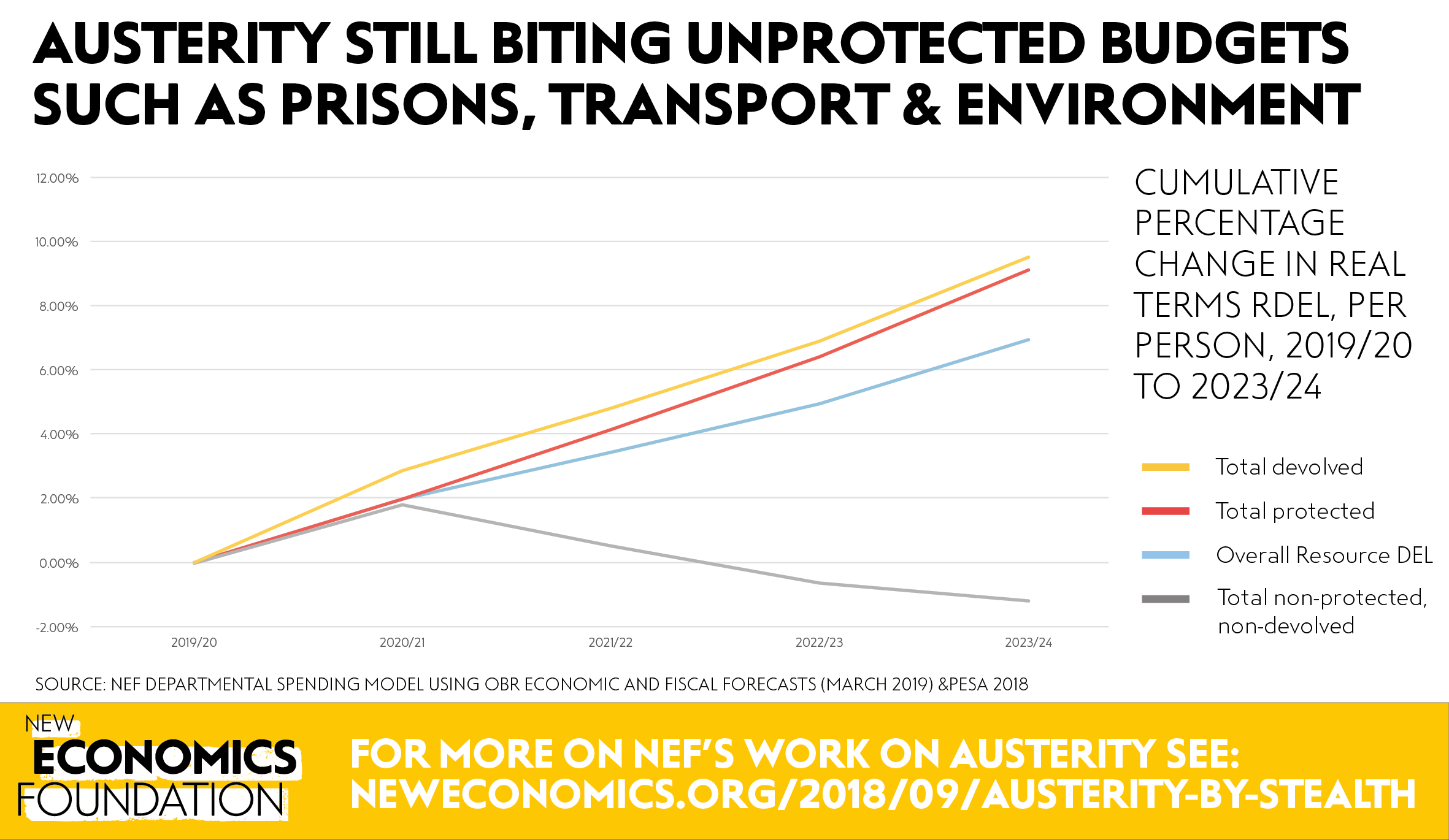Austerity still biting unprotected departments like prisons, transport and environment
New analysis from NEF shows unprotected departments cut by a further 1.2% per person by 2023/24
13 March 2019
In the Spring Statement today the Chancellor has repeated the trick of announcing the end of austerity rhetorically, but failing to deliver in practice.
New analysis from the New Economics Foundation shows that there will be still be cuts of 1.2% per person in real terms to unprotected budgets – such as for prisons, environment and rural affairs – despite the Chancellor’s repeated promises to end austerity between now and 2023/24.
The continued squeeze is modest in comparison to the cuts already seen since 2010/11, but a failure to end austerity, let alone reverse it, means that departments will continue to be significantly under resourced deep into the 2020s.
For example, by 2023/24, per person funding for Environment, Food and Rural Affairs (DEFRA) will be 56% below 2010/11 levels in real terms. For the Ministry of Justice, including prisons, real terms per person funding will be 51% down compared with 2010/11.

Sarah Arnold, Senior Economist at New Economics Foundation, said:
“At today’s Spring Statement continued the Government policy of announcing an end to austerity without actually doing so. Our analysis shows unprotected departments are still facing cuts per person after almost a decade of budget squeeze.
“The government has been focussing on bringing down the deficit at the expense of society and our environment, and we are starting to see some of the worst impacts in rising knife crime, homelessness and declining life expectancy.
“We need to rip up the rulebook that puts arbitrary targets ahead of real lives and considers the environment an afterthought. It’s our economy, and we can change the rules so that they work for people and the planet.”
Contact
Sofie Jenkinson, sofie.jenkinson@neweconomics.org 07981023031
Notes to Editors
Our previous work can be found here: Austerity by stealth? The Chancellor’s options for the next Spending Review is available at https://neweconomics.org/2018/09/austerity— by— stealth
The model used in this analysis was built by NEF to look at UK departmental spending, consistent with UK Treasury accounting and OBR forecasting data. We have updated the model with the latest figures following the Spring Statement.
NEF’s model adopts the OBR projection for total resource DEL. To simulate individual department and sub-department budgets within DEL, we roll forward all current major‘protections’ from the current plans (including: defense, foreign aid, schools, and the NHS) into the next spending review period, taking the latest government plans announced in the budget for 2019/20 as our baseline. We have also preserved an allowance for government reserves, as a provision for additional pension costs as a result of the pensions revaluation process, as provided for in 2019/20. Devolved and non-protected budgets are then projected forward, also from respective 2019/20 baselines, using an equation that allocates remaining funding within total DEL such that both the overall spending envelope isn’t breached but that the Barnet Formula is satisfied with respect to all relevant department budgets. We do not include recent announcements such as the Stronger Towns Fund as protections, as it is not clear how this will be split between resource and capital spending.
Cuts to non-protected, non-devolved departments have been estimated by assuming that the overall squeeze on spending estimated impacts smaller budgets in proportion to their size. Figures are presented in 2019/20 prices, and rounded to the nearest £10m.






